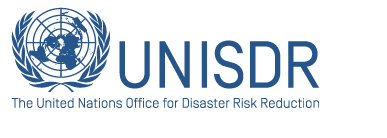This is indicated by the first “Regional Report of the State of Vulnerability and Disaster Risk in Central America”, published by the Office of the United Nations Disaster Risk Reduction (UNISDR) and the Coordination Centre for the Prevention of Natural Disasters in Central America (CEPREDENAC).
Through key studies and databases for decision making on development, considering disaster risk reduction, the report analyzes trends and situations of vulnerability and risks that have caused and may cause significant losses in the region, noting for example that between 1986 and 2011, Panama accumulated losses of nearly US$700 million as a result of disasters and experienced an average annual loss of Gross Domestic Product (GDP) of US$30 million.
The report was presented in Panama City by Ricardo Mena, Head of the UNISDR Regional Office for the Americas, who noted that the document also refers to actions aimed at reducing disaster risk and the impact of climate change, and preventive actions such as the 18 early warning systems (EWS) identified in Panama by a 2010-2012. It also addresses the importance of developing this issue with local governments such as municipalities involved the Global Campaign “Making Cities Resilient” promoted by the UNISDR, totaling 12 in the country.
Mr. Mena emphasized that: “Central America has the opportunity to act proactively, strengthen the capacity of citizens, consider disaster risks in infrastructure projects, promote development that is sensitive to natural hazards, enhance early warning systems and promote risk management education. Therefore, this report, without precedent in the Americas, is a key tool for making appropriate decisions, bearing in mind that according to the probabilistic models used by the UNISDR, the worst disasters that we could face have not yet occurred, and therefore may be avoided.”
The event was attended by Regional Directors and UN agency representatives based in Panama, authorities of the National Civil Protection System Panama (NSCP) and other government entities and the media.
About the First Regional Report on the State of Vulnerability and Disaster Risk in Central America.
The First Regional Report on the State of Vulnerability and Disaster Risk in Central America aims to identify trends and situations of vulnerability and risk that are causing significant losses in the region, in order to provide substantive evidence to support the decision-making process and strengthen the management of development in relation to disaster risk reduction and resilience building of the Central American States.
In its first edition, the report recorded accumulated losses from disasters and analyzes their impact on Costa Rica, El Salvador, Guatemala, Honduras, Nicaragua and Panama. It also points out that, after Southeast Asia, Central America is the most vulnerable region to climate risks in the world, highlighting that poverty, deficient infrastructure, a lack of urban planning and unregulated and inadequate use of natural resources, are underlying risk factors that increase the vulnerability of the population and its assets and livelihoods, primarily of people and communities with limited resources
The document brings together recent studies from international organizations such as the United Nations Economic Commission for Latin America and the Caribbean (ECLAC) and databases such as the international disaster database (EM-DAT), the Centre for Research on the Epidemiology of Disasters (CRED) and the inventory system of the effects of disasters (DesInventar).
Its preparation involved the collaboration of national risk management and civil defense systems of the countries in the region, various organizations from the United Nations system and other international multilateral and technical agencies, civil society and academia.
The First Regional Report on the State of Vulnerability and Disaster Risk in Central America was prepared by the Office of the United Nations Office for Disaster Risk Reduction (UNISDR), through its Regional Office for the Americas, in collaboration with the Executive Secretariat of the Coordination Centre for Natural Disaster Prevention in Central America (CEPREDENAC) and with financial support from the Australian Agency for International Development (AusAID) and the Swiss Agency for Development and Cooperation (SDC).
Regional Office The Americas
Arnoldo Cano #142,
P.O. Box 0843-03441.
Panamá, Panamá
Media Contact
Humberto Jaime
Wapp.+507 6541-3228
Tel.+507 317 1120
hjaime@eird.org
Related Links:
First Regional Report on the State of Vulnerability and Risk in Central America
UNISDR- The Americas
CEPREDENAC
|




